Last night I decided I was going to find out how the universe worked. As you do. Over the course of millennia, this type of basic intrigue has resulted in countless scientific theories, genius discoveries, a huge number of deaths and an unthinkable level of bullshit. But the point remains — what the hell is going on out there?
I’m going to try to put together some of the things I found yesterday, and see if it makes sense. You see, my journey through cosmology, founded and based on my own opinions of the universe and typical big-bang logic, was going really well, just casually going, ‘yeah black holes, totally’ — then I read this:
‘Dark matter accounts for 23% of the mass-energy Princess bounce house density of the observable Universe. In comparison, ordinary matter accounts for only 4.6% of the mass-energy density of the observable Universe, with the remainder being attributable to dark energy.”
Okay. Now this is all getting slightly out-of-hand all of a sudden. I did science at GCSE — I know what a Bunsen burner is — but what, I ask you, is ‘dark energy’?
If you’re reading this as some kind of extreme Star Trek fan, and you already have an in-depth knowledge of dark matter, dark energy and how the universe began — then I ask you: How much did Liverpool pay for Stan Collymore in the 1995/96 season? Exactly.
Here’s what I found:
Dark Matter.
So, the universe is essentially made up of stuff that doesn’t look like it’s there. That’s the first thing. Dark matter, which has gravitational effects on visible matter and background radiation, but does not emit any electromagnetic radiation itself, accounts for 23% of the mass-energy of the universe. It was first hypothesised in 1934 by Fritz Zwicky, as a way to account for the scientific evidence of ‘missing mass’ in the orbital velocities of galaxies. Dark matter does not interact with electromagnetic radiation, and as far as I can tell from what I have read, it is also transparent. Baffled.
In simple terms, scientists think that Dark Matter is the stuff that holds a galaxy together and keeps it from collapsing in on itself, as it regulates the speed at which the physical matter within it, like star systems and gas, can orbit the galaxy’s centre. But you can’t see it. About 4% less baffled.
Dark Energy.
Dark Energy accounts for 74% of the universe, and Stars and planets etc. 0.4%. But here’s the thing:
“In physical cosmology, astronomy and celestial mechanics, dark energy is a hypothetical form of energy that permeates all of space and tends to increase the rate of expansion of the Universe.”
This is worse than the last one — what is a ‘hypothetical’ energy doing ‘permeating all of space’? That’s some pretty cavalier science —
‘What about the other 74% of the universe?’
‘Fvck knows Geoff, it’s hypothetical’.
Anyway, as far as I can tell, Dark Energy exists throughout all space, and somehow gives the universe the momentum it needs to expand. Widespread scientific opinion suggests the universe is not just expanding, but accelerating in its expansion too. Dark Energy is widely believed to have a strong negative pressure, which means it repels rather than attracts, almost like the opposite of gravity, pushing matter away from other matter. Expanding the universe.
[yframe url=’http://www.youtube.com/watch?v=OhxY69Pi7ZI’]
Anyway, enough about what the universe is made of. How did the bugger start?
The Big Bang.
 13.7 billion years ago, most of us reckon there was a massive bang.
13.7 billion years ago, most of us reckon there was a massive bang.
‘Big Bang Theory’, formerly known by the far less suitable ‘Hypothesis of the Primeval Atom Theory’, can unfortunately only explain what happened after the moment of creation, and offers us no hand in explaining how the matter that comprises the universe got there in the first place. If you follow this model back as far as it can go, you arrive at a singular point. Where everything in existence could fit into the space of nothing at all.
In 1929, Edwin Hubble discovered that the distance between distant galaxies was proportional to their red shifts. This means that galaxies closer to us are moving away more slowly than galaxies further away. Using Einstein’s theory of general relativity, it was hypothesised that the galaxies accelerating away from one another must have been closer together in the past; perhaps maybe even so close together they formed a single point.
Just imagine how fast the universe is expanding at its outer edge.
As mentioned earlier, science suggests that Dark Energy is the force that propels the universe in its expansion, so I think it’s fair to say that the Big Bang seems viable. But it doesn’t explain anything really. It just makes a little bit of sense.
Cyclical Universes, ‘Big Bang, Big Crunch’.
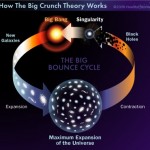 Naturally, the Big Bang Theory can accompany the Cyclical Universe Theory. The Dark Energy that propels the universe in all directions must reach a point of exhaustion, when the gravitational pull of the centre of the universe becomes greater than the force of negative pressure. At this point, scientists have suggested that the universe starts to collapse, resulting, hypothetically, in a singular point so dense and rich in raw energy that it super-mega-ultra-novas in a Big Bang again. And then, apparently, that just goes on forever.
Naturally, the Big Bang Theory can accompany the Cyclical Universe Theory. The Dark Energy that propels the universe in all directions must reach a point of exhaustion, when the gravitational pull of the centre of the universe becomes greater than the force of negative pressure. At this point, scientists have suggested that the universe starts to collapse, resulting, hypothetically, in a singular point so dense and rich in raw energy that it super-mega-ultra-novas in a Big Bang again. And then, apparently, that just goes on forever.
As this guy explains.
[yframe url=’http://www.youtube.com/watch?v=AzwxQAn40g0′]
God.
 A man with a long beard and doubtlessly worn leather sandals threw it together in a casual week’s work about 6000 years ago.
A man with a long beard and doubtlessly worn leather sandals threw it together in a casual week’s work about 6000 years ago.
The best thing about the Universe is that you can’t understand it. There’s just too much going on at any given time. At least five Supernovas occurred somewhere in space whilst you were reading that last sentence, and whilst you read the next one, it’s possible that new Universes are just beginning their own journeys. Science can’t explain where everything began, and neither can Religion. It’s all about faith. So I decided to fvck all of that off, and find out about Black Holes and different dimensions instead.
Black Holes and Stellar-Mass Black Holes.
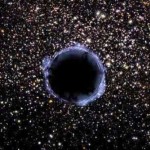 Black holes are cool. No doubt about it. But do they offer any explanation for how the Universe began? Some scientists, Stephen Hawking included, have hypothesised that Black Holes give birth to new Universes, by collecting matter from one region of space-time, and then spawning it somewhere else, creating a entirely new Universe in the process. But what even are they? Here’s the science:
Black holes are cool. No doubt about it. But do they offer any explanation for how the Universe began? Some scientists, Stephen Hawking included, have hypothesised that Black Holes give birth to new Universes, by collecting matter from one region of space-time, and then spawning it somewhere else, creating a entirely new Universe in the process. But what even are they? Here’s the science:
To understand a Black Hole, you first need to fully understand how a Star works. Stars are thought to form when the dense matter within drifting molecular clouds collapses to form a ball of plasma. Due to the nature of these molecular clouds, being both very low in temperature and very dense, they permit the formation of the most common element in the Universe: molecular Hydrogen. After collapse and formation, the subsequent nuclear process of a newly formed star is to turn that Hydrogen into Helium, and then later on in its life, begin to change Helium into heavier elements like Carbon and even Lead.
So — The Big Bang is only initially responsible for the creation of the most basic element: Hydrogen. Hydrogen, through nuclear fusion, creates Helium, and every other known element thereafter is created from the foundation of these two elements, through nuclear fusion in the nucleus of a star. When a star dies, the wide array of new elements created within it are thrown through space, and when a massive star dies, this violent demise can create the conditions where a Black Hole can be born. Got it. Here’s a clever bloke explaining it all:
[yframe url=’http://www.youtube.com/watch?v=GYKyt3C0oT4′]
With one being created every second in the observable universe, Black Holes form when the life of a huge star ends in a supernova explosion. Scientists think that around one in a thousand stars are massive enough to become a Black Hole, and thus, there are thought to be about 100 million black holes in our Galaxy alone. This is just hypothesis though, because there aren’t very many Black Holes that scientists have concretely discovered, in the entirety of the known universe.
Black Holes are created when an object becomes unable to cope with the compressing force of its own gravity, and as a result, nothing in our Solar System could ever become one — the gravity of the Earth say, is not sufficient to overwhelm the nuclear and atomic forces within it. Those forces don’t like being compressed very much, and our gravity just isn’t strong enough to crush them. But in much larger stars, the gravitational force of the star can overpower those internal forces, and in these cases, they can collapse, giving birth to a Black Hole.
A Black Hole would look like an invisible region of space, surrounded by something called a ‘Event Horizon’. A shitty but invariably cool film, but also a point of no return, the Event Horizon is an area of Space around a Black Hole where nothing inside can escape from its gravity. Not even light. You can’t see a Black Hole, because to see something, light has to reflect off it, and light trying to reflect off the Black Hole’s surface cannot escape the gravitational pull within the Event Horizon. They are thus, literally invisible.
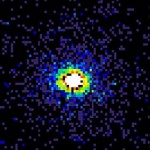 Stellar-Mass Black Holes are born when a star at least 25 times larger than our own Sun dies, and are much larger and more powerful than ordinary Black Holes. Of those that have been identified, the nearest known Black Hole is 1600 light years away, and there are doubtlessly trillions and trillions of them in the Universe. The picture to the left shows the super-hot center of Cygnus X-1, located in the constellation Cygnus, some 8, 100 light years away. It is locked in a tight orbit with a bright blue Star, completing a full orbit every 5.6 days. Scientists can detect its presence because gasses being pulled off the visible star are being super-heated as they fall into the Black Hole. This can be traced by the X-rays that are emitted during the process, shown here in yellow.
Stellar-Mass Black Holes are born when a star at least 25 times larger than our own Sun dies, and are much larger and more powerful than ordinary Black Holes. Of those that have been identified, the nearest known Black Hole is 1600 light years away, and there are doubtlessly trillions and trillions of them in the Universe. The picture to the left shows the super-hot center of Cygnus X-1, located in the constellation Cygnus, some 8, 100 light years away. It is locked in a tight orbit with a bright blue Star, completing a full orbit every 5.6 days. Scientists can detect its presence because gasses being pulled off the visible star are being super-heated as they fall into the Black Hole. This can be traced by the X-rays that are emitted during the process, shown here in yellow.
Super-Massive Black Holes.
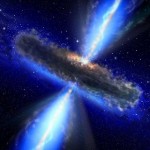 In the very middle of the Galaxy we inhabit, located some 28, 000 light-years away in the constellation Sagittarius, lives a Super-massive Black Hole. Although we cannot see it, we can detect its existence through the X-rays that it produces when it sucks matter inside it. Super-massive Black Holes have a mass of a million to a billion times that of our own Sun, and are found solely in the center of Galaxies. Scientists believe that it is probably the case that most Galaxies have a Super-massive Black Hole at their heart, powerful enough to pull entire Solar Systems inside it.
In the very middle of the Galaxy we inhabit, located some 28, 000 light-years away in the constellation Sagittarius, lives a Super-massive Black Hole. Although we cannot see it, we can detect its existence through the X-rays that it produces when it sucks matter inside it. Super-massive Black Holes have a mass of a million to a billion times that of our own Sun, and are found solely in the center of Galaxies. Scientists believe that it is probably the case that most Galaxies have a Super-massive Black Hole at their heart, powerful enough to pull entire Solar Systems inside it.
As explained here:
[yframe url=’http://www.youtube.com/watch?v=leZdJmUF4lM’]
Wormholes.
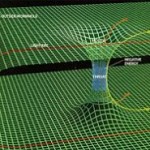 Science-Fiction has taken the wormhole hypothesis very seriously, and no wonder. We know that Black Holes have a strange effect on matter when it enters the Event Horizon, powerful even enough to distort time and slow it down. After Stephen Hawking suggested that a Black Hole might actually pass material from one region of space-time to another, writers began imagining them as portals to other dimensions and distant Galaxies. Without any observational or experimental data whatsoever, wormholes are pure hypothesis. But Science is not discounting their existence as a means of traversing huge expanses of Space, or even traveling through time, because the theory of General Relativity allows for Black Holes to have some pretty odd properties. No Deep Space 9 shit then, for the time being at least.
Science-Fiction has taken the wormhole hypothesis very seriously, and no wonder. We know that Black Holes have a strange effect on matter when it enters the Event Horizon, powerful even enough to distort time and slow it down. After Stephen Hawking suggested that a Black Hole might actually pass material from one region of space-time to another, writers began imagining them as portals to other dimensions and distant Galaxies. Without any observational or experimental data whatsoever, wormholes are pure hypothesis. But Science is not discounting their existence as a means of traversing huge expanses of Space, or even traveling through time, because the theory of General Relativity allows for Black Holes to have some pretty odd properties. No Deep Space 9 shit then, for the time being at least.
[yframe url=’httpv://www.youtube.com/watch?v=hriqvP-RVxc’]
The 11-Dimensions.
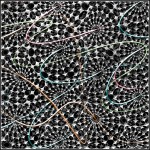 I’m going to finish off this article by trying to tackle M-Theory and the idea that there are 11 separate Dimensions. M-Theory is a development of String Theory, and although nothing more than a theory, M-Theory asserts that electrons and quarks within an atom are 1-Dimensional slices of a 2-Dimensional Membrane that vibrate in 11-Dimensional Space. Brilliant. So what does that mean then?
I’m going to finish off this article by trying to tackle M-Theory and the idea that there are 11 separate Dimensions. M-Theory is a development of String Theory, and although nothing more than a theory, M-Theory asserts that electrons and quarks within an atom are 1-Dimensional slices of a 2-Dimensional Membrane that vibrate in 11-Dimensional Space. Brilliant. So what does that mean then?
So, simply because I haven’t got a clue, I’m going to leave you with this. If you understand it, then I presume you’ve spent approximately 22% of your total lifetime in Games Workshop and have had little or no $ex. Fairs.
[yframe url=’http://www.youtube.com/watch?v=NNvHdCosX08′]
So there it is, my Layman’s guide to Cosmology. Cheers for reading.

















